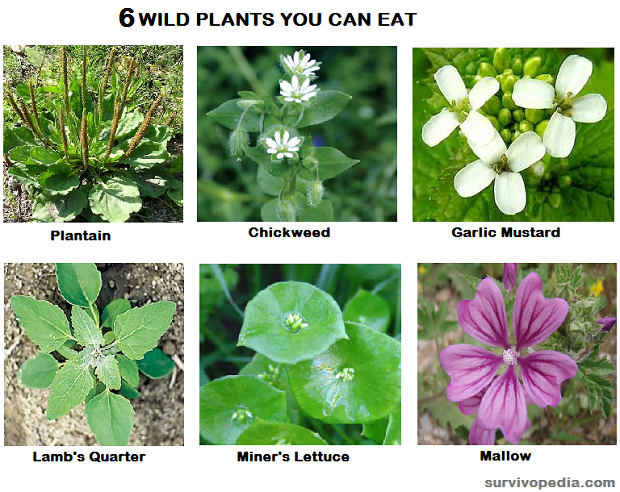Hungry? Head outside and pick those pesky dandelions. On the coast? Grab that giant piece of kelp that just washed up. Yes! They are both edible and a great source of vitamins. Many of Oregon plants that you see on a daily basis can be eaten, some are even here on campus!

Recognize any of these? They can all be found here in Oregon. If you are ever on a trail and come across one wash it off and take a taste. Be careful of any plants that are near a road or buildings. Plants can be sprayed with harmful pesticides that you do not want to ingest. Having all of these plants right outside our doors is amazing and can be very useful if there is ever an emergency. You have food all around you!
Another tip if you want to go out and start eating random plants, make sure you are positive you know what it is. As there are many plants that are edible some are also deadly or poisonous and can have similar appearances to ones that are not.
Take Camas for example. This beautiful purple flower has very large white bulbs that can be eaten and boiled just like a potato.

These are the differences, but there aren’t too many. The right picture is the edible camas that is a vibrant purple, the other is known as “Death Camas.” The plant that is often mistaken as Camas and can be fatal if a lot is ingested. They are both a cone shape flower, with purple buds, and are generally the same height. We can understand why people might mix them up if that is the only criteria they are going off of.
Eating plants off the forest floor is a thrill and really makes you feel like you are one with the Earth. I would say try it, just remember to know exactly what you are looking for! Happy Eating!

April 26, 2017 at 3:27 pm
I walk by a lot of the plants that you have mentioned above, and I find it extremely interesting that I have never thought about what their nutritional benefits could be. I don’t think I will start incorporating them into my everyday diet, but the thought will remain in the back of my mind if there ever comes a time where I am stranded in the wilderness. It would be smart of me to memorize how to tell if a plant is poisonous or not though… haha.
April 26, 2017 at 8:47 pm
Do you knw of the caloric breakdown/benefits from these plants? How else can they be incorporated? Such as tea, fish garnishes, etc?
April 26, 2017 at 8:57 pm
Hey Abby, thank you for putting the pictures with the names of the edible plants. Personally, I don’t feel confident enough to go out and pick plants to eat without having a picture of the edible plant that I can compare it with. Your blog post is a great help!
April 27, 2017 at 8:59 am
I find it really interesting how you narrowed down your range of edible plants based on what can be found in Oregon. I had not considered that when I created my blog post. However, we did both make note of plantain as plant viable for eating and use in herbal medicine. Outside of these plants being edible, I would be interested in finding out what their uses are medicinally. Just a thought.